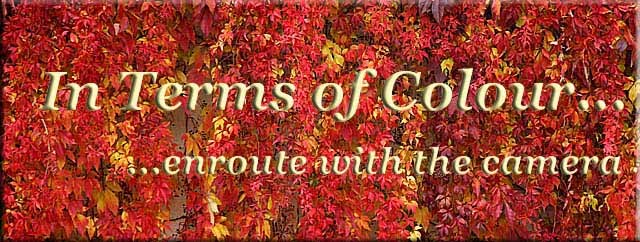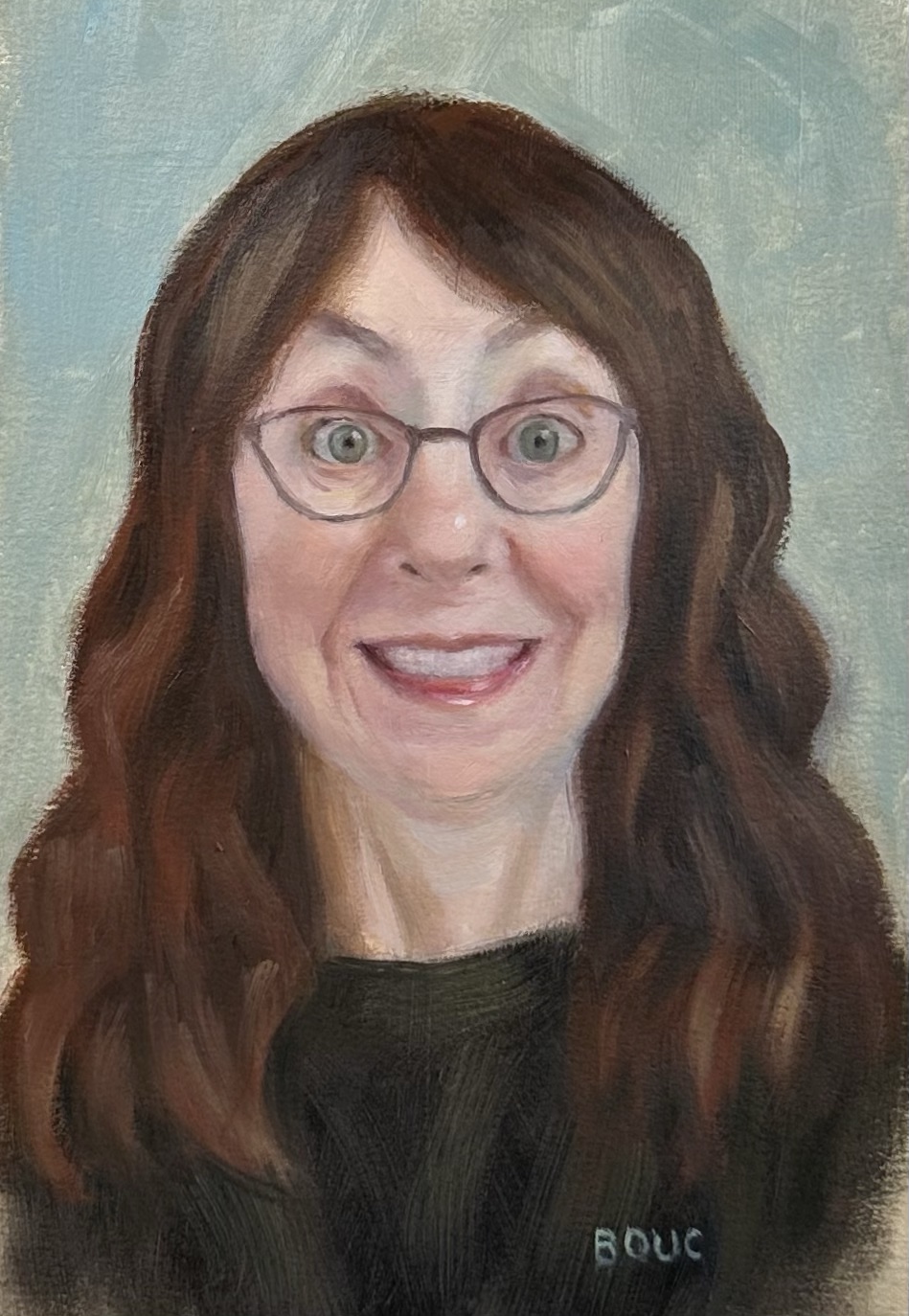Do you love purple? I do - especially the dark shades of purple (which is here Tyrian Purple). But what is purple at all? Again not so easy if your consider all the hues that belong to the family of purples.
Purple - the colour - lies between red and blue. Depending on the quantity of pigments, its tints and shades, it either tends to the range of violets or the range of magentas and pinks.
In history the original purple was in fact Tyrian Purple, a colour which was extracted from sea snails. The first people who used this process were the ancient Phoenicians.
Tyrian purple was extremely expensive. Therefore it was no wonder that only the clergy and the royalty could afford to use this in their textiles. Additionally early sumptuary laws dictated and forbade the use of purple dyed textiles which became status symbols for anyone other than it was destined for. In Byzantium the production of shellfish purple was tightly controlled and even subsidized by the imperial court, which restricted its use for the colouring of silks for imperial use (after Wikipedia).
Recently, the archaeological discovery of substantial numbers of Murex shells on Crete suggests that the Minoans may have pioneered the extraction of Imperial purple centuries before the Phoenicians. Dating from collocated pottery suggests the dye may have been produced during the Middle Minoan period in the 20th–18th century BC (after Wikipedia).
Purple is associated with power, both earthly and spiritual. In healing, purple is used for mental disorders and also for becoming one with Spirit. In the aura purple signifies higher spiritual development. Purple is the color of the imagination. It can be creative and individual or immature and impractical. Following are some quotations about the psychological impact of purple:
"The color purple relates to the imagination and spirituality. It stimulates the imagination and inspires high ideals. It is an introspective color, allowing us to get in touch with our deeper thoughts."Here are the two basic colour blocks of purple - one dark, one lighter, different hues and values:
"While the violet is not quite as intense as purple, its essence is similar. Generally the names are interchangeable and the meaning of the colors is similar. Both contain the energy and strength of red with the spirituality and integrity of blue. This is the union of body and soul creating a balance between our physical and our spiritual energies.
Purple or violet assists those who seek the meaning of life and spiritual fulfillment - it expands our awareness, connecting us to a higher consciousness. For this reason it is associated with transformation of the soul and the philosophers of the world are often attracted to it."
"In the meaning of colors, purple and violet represent the future, the imagination and dreams, while spiritually calming the emotions. They inspire and enhance psychic ability and spiritual enlightenment, while, at the same time, keeping us grounded."
"From a color psychology perspective, purple and violet promote harmony of the mind and the emotions, contributing to mental balance and stability, peace of mind, a link between the spiritual and the physical worlds, between thought and activity. Violet and purple support the practice of meditation."
"The color purple is specifically associated with royalty and the nobility, creating an impression of luxury, wealth and extravagance.
Purple has power. It has a richness and quality to it that demands respect. Purple is ambitious and self-assured, the leader.
Too much of the color purple can promote or aggravate depression in some. It is one color that should be used extremely carefully and in small amounts by those who are vulnerable to these depressed states."
"Positive sides include unusual and individual, creative and inventive, psychic and intuitive, humanitarian, selfless and unlimited, mystery, fantasy and the future.
Negative sides include immaturity, being impractical, cynical and aloof, pompous and arrogant, fraudulent and corrupt, delusions of grandeur and the social climber." (after http://www.empower-yourself-with-color-psychology.com/color-purple.html)
Another diagram of the purple range is this one:
You will realize that I excluded the lighter hues of this diagram in the above purple range because I feel that these belong to other hues and shades. DFA7E4 f.e. you would not call "purple" as standing alone colour - would you - but rather "plum".
(Btw - Munsell purple is named after the Munsell colour system. And the X11 purple comes from the first versions of Mosaic and Netscape Navigator which used the X11 colors as the basis for the Web colors list, as both were originally X applications - see Wikipedia).
Here is a chart of the basic purples via http://www.toledo-bend.com/colorblind/purplechart.asp)
Basic Purples
| Color | Hex | Decimal | Co# | Description |
| 800080 | 128,0,128 | 1 | Deep Purple | |
| 330033 | 51,0,51 | 2 | Very dark purple | |
| 6633CC | 102,51,204 | 3 | Purple | |
| 663399 | 102,51,153 | 4 | Purple | |
| 6600CC | 102,0,204 | 5 | Dark Purple-blue | |
| 660099 | 102,0,153 | 6 | Royal Purple | |
| 9966CC | 153,102,204 | 7 | Lavender | |
| 9900FF | 153,0,255 | 8 | Periwinkle | |
| FF00FF | 255,0,255 | 9 | Pink / Fuscia | |
| 9999CC | 153,153,204 | 10 | Purple-gray | |
| CC99FF | 204,153,255 | 11 | Lilac | |
| CC99CC | 204,153,204 | 12 | Light Plum | |
| B030D8 | 176,48,216 | Orchid |
Interesting are also the psychological views on the variations of purple (the artificial ones - because there is a big difference between natural and artificial/HTML colours):
Variations of the Color Purple/VioletMauve: Mauve helps us to make the best choices and decisions; it is concerned for justice to be done and always does the right thing. On the other hand it can indicate a degree of commonness, the social climber aspiring to higher ideals.
Lavender: Lavender is attracted to beautiful things. It has a fragility, sensitivity and vulnerability to it.
Lilac: Lilac (or light purple) implies immaturity, superficiality and youthfulness. It is extroverted and enthusiastic, inspiring glamour, romance and vanity.
Amethyst: A mystical color, amethyst opens intuitive channels. It protects the vulnerable and assists the humanitarian. It is the color of the evolved soul.
Plum: An old-fashioned color, plum is honorable and linked to family traditions. It is also prudish and narrow-minded, always preaching at you.
Dark Purple: Dark purple is related to higher spiritual attainment. A powerful color, it can also indicate arrogance and ruthlessness." (after http://www.empower-yourself-with-color-psychology.com/color-purple.html)
































































